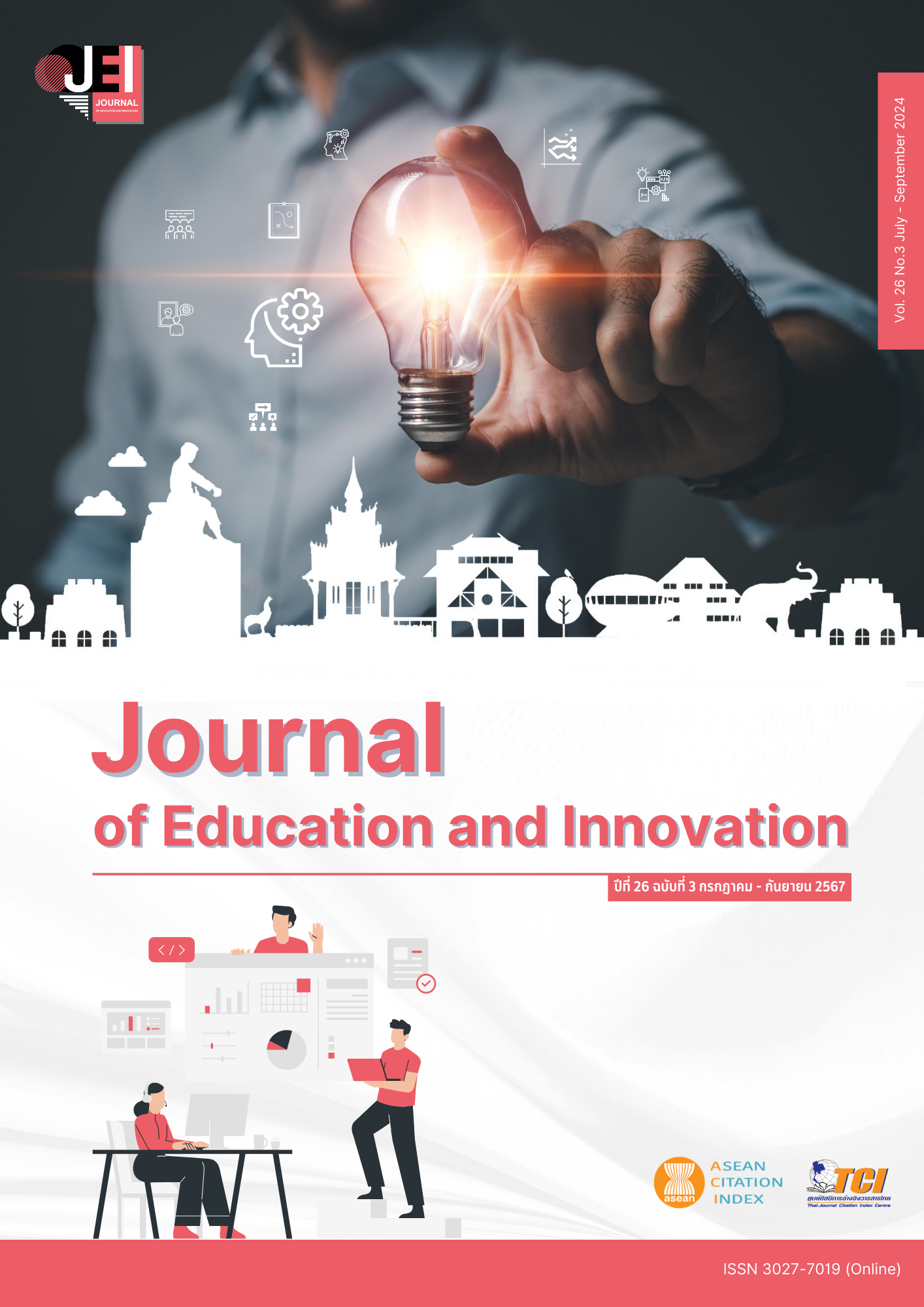A MODEL OF TRAVEL PATTERNS FROM SHARING ON SOCIAL MEDIA WITH STORYTELLING TECHNIQUES: A CASE STUDY OF PHITSANULOK PROVINCE
Main Article Content
Abstract
The objectives of this research were 1) to develop a model of travel patterns from sharing on social media with storytelling techniques: a case study at local level in Phitsanulok, 2) to assess the quality of the tourism model from sharing information on online social media with storytelling techniques, and 3) to do pre-test and post-test a model of travel patterns from sharing on social media with storytelling techniques as a case study of Phitsanulok Province. The target groups were 100 youths with technology skills from Phitsanulok province who volunteered to participate in this project. Research tools were 1) travel patterns from sharing on social media with storytelling techniques, 2) quality assessment form by experts, and 3) test of travel patterns from sharing on social media with storytelling techniques. Statistics used in data analysis were the mean, percentage, standard deviation, and t-test (dependent samples t-test). The results of the research showed that;
1. The travel patterns model from sharing on social media with storytelling techniques for Phitsanulok province consist of 3 components: 1) learning cycle, 2) connection, and 3) reflection.
2. Travel patterns from sharing on social media with storytelling techniques has an efficiency E1/E2 equal to 80.17/81.25 meeting the set criteria at 80/80.
3. Regarding the results of the pre-test and post-test of the learners, it was found that the average scores were 20.69 and 37.37 respectively and comparing between the pre-test and the posttest scores, the students’ posttest scores were significantly higher than their pretest scores at the 0.5 level.
Article Details

This work is licensed under a Creative Commons Attribution-NonCommercial-NoDerivatives 4.0 International License.
The owner of the article does not copy or violate any of its copyright. If any copyright infringement occurs or prosecution, in any case, the Editorial Board is not involved in all the rights to the owner of the article to be performed.
References
Chaicharoen, S. (2014). Instructional design, principles, theory into practice. Khon Kaen: Faculty of Education Khon Kaen University.
Chala, C. (2013). Developing Learning with Technology and Reality (AR) in conjunction with bilingual storybooks using Group process to promote early childhood listening and speaking language skills. Bangkok: King Mongkut's University of Technology Thonburi.
DIGI.TORY. (2021). Storytelling What is it? How good is it for the online world in this era? Retrieved April 3, 2023, form https://digitorystyle.com/what-is-storytelling/
Juathai, J. (2018). The study on the Construction Model of Community Ecological Sustainability with Local Wisdom Base. Journal of Education Thaksin University, 18(1), 77-89.
Sarnok, K., Wannapiroon, P., Nilsook, P., & Chalermsuk, N. (2019). System architecture and elements of digital learning ecosystem for teaching and learning with digital storytelling for teacher professional students. Sikkha Journal of Education, 6(2), 87-100.
Sittiwong, T. (2016). Instructional system design. Bangkok: V Print.
Suthirat, C. (2012). 80 Learning management innovations that focus on learners (5th ed.). Bangkok: Danex Inter Corporation.
Wannaprapa, T. (2015). Teaching model for developing information synthesis skills by self-directed learning via social media. For undergraduate students (Doctoral dissertation). Chonburi: Burapha University.
Wanpirun, P., & Supha, W. (2012). Collaborative learning model through social media to support learning through communication arts projects for graduate students. National Academic Conference on e-learning 2012 (pp. 161-169). Bangkok: Impact Muang Thong Thani.


